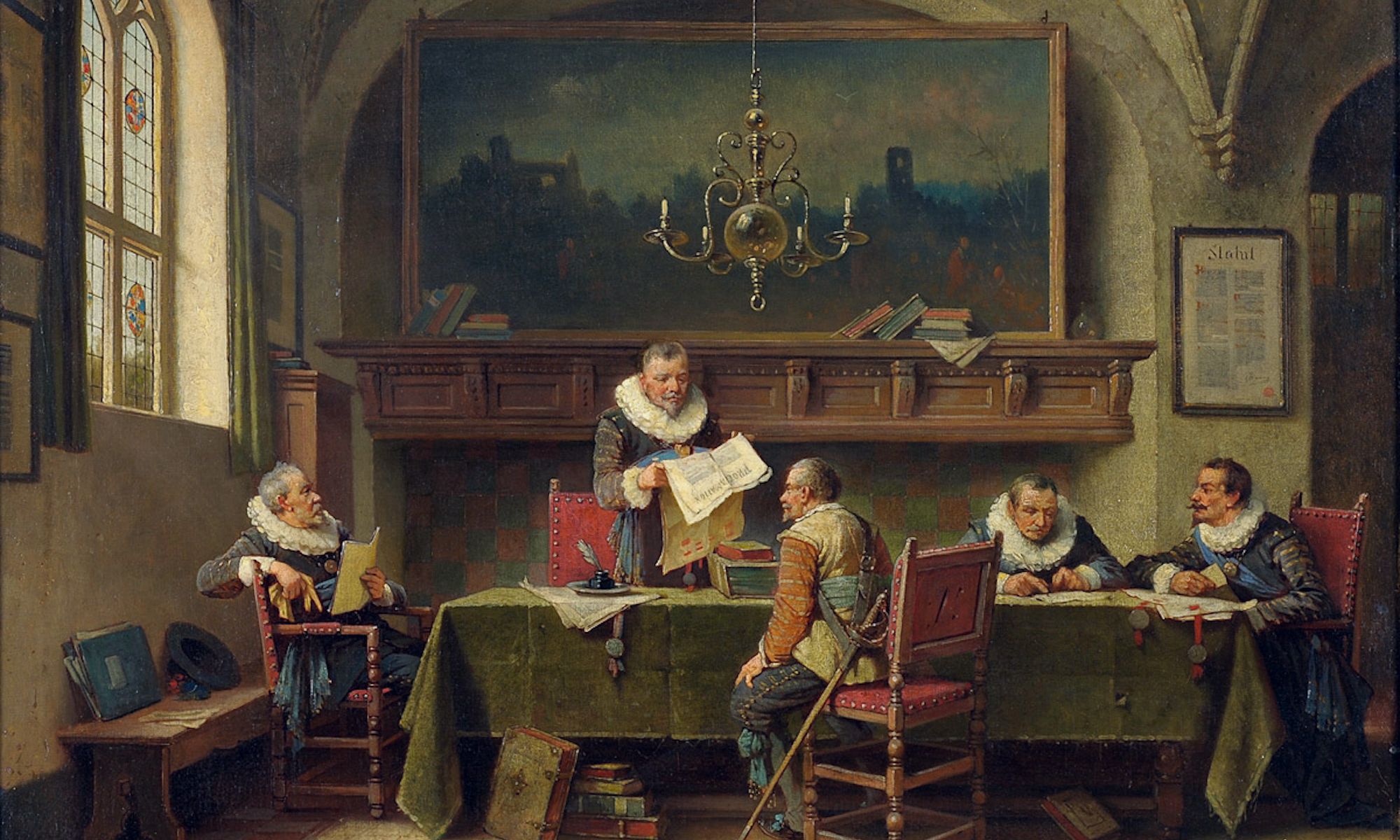Charles Meer Webb, The Group of Lawyers, late 19th century Via Wikimedia Commons
Last month more than 300 lawyers, museum staff and art law devotees convened in Philadelphia and by webinar for the popular annual conference on legal issues in museum administration, hosted by the non-profit American Law Institute and co-sponsored by the Smithsonian Institution.
Among other topics under discussion from 17 to 19 May, experts offered art law updates on regulatory and legislative changes, litigation, tax, copyright and trademark, NFTs (non-fungible tokens), ethical returns, international loans and using social media to collaborate with audiences. Three subjects provided especially rich fodder for discussion.
When museums team up to buy a work of art, contracts will be needed to spell out who does what. In April, the National Portrait Gallery in London and the J. Paul Getty Museum in Los Angeles announced their joint purchase of Portrait of Mai (Omai) (around 1776) by Joshua Reynolds. The institutions will share exhibition, research, and conservation care of the work.
“The only way to keep the painting in the UK was to decide on a joint ownership,” which the Getty decided to participate in, Margot Stokol, assistant general counsel to the J. Paul Getty Trust, told the conference. She added that complications in negotiating joint ownership could arise if there are more than two owners, if funders have imposed restrictions or if there are foreign owners. “Parties generally expect possession to be equal to their ownership interest. If there is a collection of objects, does it get divided? Is there a rotation? What is best for the object?”
Joshua Reynolds’s Portrait of Omai seen here being prepared for an exhibition at Tate Britain in 2005 Credit: PA Images / Alamy Stock Photo
Hope O’Keeffe, senior associate general counsel to the Library of Congress (LOC) in Washington, DC, said that in planning a joint purchase, the parties could consider “who will handle the inspection”—should the receiving museum film the unboxing, for instance?
In 2017, an old album containing rare photographs of the civil rights activists Harriet Tubman and John Menard was bought by the LOC jointly with the Smithsonian Institution’s (SI) National Museum of African American History and Culture. The agreement between the SI and LOC specified that custody, conservation costs and management would be shared consistently with the parties’ 50% ownership interests, that the album would rotate between them for exhibition and that they would mutually to agree on loans, joint credit lines and other details.
“The trope we’re all used to is that nobody likes lawyers, but in the 1950s and 60s,” people liked lawyers, who were viewed as heroic figures in upholding democracy after the Second World War, said Meghan Delaney Berroya, associate general counsel at the SI. “Then, we ruined it,” she said, with the Watergate scandal, which surfaced bad behaviour by numerous lawyers. This prompted a tightening of professional ethics rules for lawyers, including adding baseline requirements that carry disciplinary sanctions.
The rules also say what lawyers can do: Berroya pointed to rule 2.1 of the American Bar Association’s model rules of professional ethics, which says that in advising a client, a lawyer may refer not only to law, but to other relevant considerations “such as moral, economic, social and political factors”. For what lawyers can’t do, she cited rule 4.2, governing transactions with persons other than the lawyer’s client who have their own lawyer.
“In-house counsel confronts these situations frequently,” Berroya said. For example, a museum employee may “want the lawyer to hop on the phone and solve [a] problem with a third party”. But if the third party has a lawyer, the museum’s lawyer is not permitted to call the outside party because that person’s lawyer needs to be on the call. The problem is that if both lawyers do get on the call, “that can take the situation to a different level and make it more difficult to resolve”.
Kimberly Wong, associate general counsel at the J. Paul Getty Trust, cautioned lawyers not to copy their clients on emails to opposing counsel. “Your client could reply to all and waive the attorney-client privilege,” she said, which does not protect the client’s statements if parties other than the client’s lawyer are included. The client could also unwittingly “reveal confidential information” to the opposing lawyer. Wong counseled that rather than copy the client, the lawyer should write only to the opposing lawyer, and then forward that to the internal client.
Culture change inside institutions “is shared work”, with “three main groups having the most impact”—human resources, legal and the museum’s DEIA (Diversity, Equity, Inclusion and Accessibility) team—said Mikka Gee Conway, the chief diversity, inclusion and belonging officer at the National Gallery of Art.
Sheronda Whitaker, the deputy director for human resources and chief diversity officer at the Barnes Foundation, described recent DEIA initiatives at the Philadelphia institution. The Barnes conducted a cultural assessment, adopted programmes including anti-racism training and trainings on DEIA and updated its code of conduct and employee handbook, including the statement: “Diversity, equity, inclusion and accessibility are necessary parts of all our activities.” This means “across the board, from exhibitions to community-based engagement” and otherwise, she said. The Barnes also hired a manager of recruitment and training “to diversify staff in all areas of our institution”, Whitaker added.
An accountability section in the code of conduct lays out disciplinary measures for violations and outlines reporting steps, including anonymous channels. As an example on implementation, the cultural assessment identified areas where the Barnes could improve, such as making the need for transparency “loud and clear” and “particularly around our financials”, Whitaker said. The museum addressed this by including financial information in regular staff meetings and adding trainings delivered by its finance department. She added, “We heard what people said, and took it very seriously.”
Museum lawyers weigh in on diversity initiatives, joint acquisitions and more at industry conference

